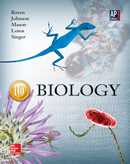1 A) transcription; translation B) eukaryotes; prokaryotes C) prokaryotes; eukaryotes D) catabolism; anabolism E) anabolism; catabolism 2 A) nucleic acid. B) protein. C) carbohydrate. D) nucleic acid and protein. E) nucleic acid, protein, and carbohydrate. 3 A) Chromatin in the closed conformation is more easily transcribed than chromatin in the open conformation. B) Acetylated histones do not bind as tightly to DNA as non-acetylated histones. C) ATP-dependent chromatin remodeling enzymes can be recruited to a site of transcription by activator proteins. D) Steroid hormone receptor molecules often function as transcriptional activators. E) All of the above statements about the regulation of gene expression in eukaryotes are correct. 4 A) leucine zipper B) The homeodomain motif C) disulfide bridge D) zinc finger E) helix-turn-helix 5 A) True B) False 6 A) Alternative splicing leads to different protein products with very different functions. B) Alternative splicing enables an organism to increase the size of its genome without having to increase the size of its proteome. C) Alternative splicing is common in all eukaryotes, but uncommon in prokaryotes. D) Alternate forms of a protein are made by different cell types, or at different stages of development, from a single gene in the genome. E) All of the above statements about alternative splicing are correct. 7 A) RNA interference is an example of genetic regulation at the level of transcription. B) Precursor miRNAs form a hairpin loop and are then hydrolyzed by dicer. C) MiRNAs associate with cellular proteins and then bind to target sequences in mRNA. D) In animals, RISC inhibits translation. E) In plants, RISC targets a mRNA for degradation. 8 A) Binding of the lac repressor to the operator of the lac operon. B) Binding of the trp repressor to the operator of the trp operon. C) Binding of the CAP-cAMP complex near the promoter of the lac operon. D) Both a and b are examples of positive regulation. E) None of the above is an example of positive regulation. 9 A) They modify the structure of RNA polymerase, which is free to diffuse in the direction of the gene which will be activated. B) They collect repressor proteins which promote transcription, then are able to contact the initiation complex (to which RNA polymerase II is bound), stimulating transcription. C) Enhancers are proteins which stimulate transcription, and can move throughout the nucleoplasm. D) Regions of DNA far distant from an actual gene are catalytic, and can create end-products which activate RNA polymerase II. These end-products accumulate until there is sufficient activation for transcription to occur. E) DNA bends to form a loop, positioning the enhancer closer to the promoter. 10 A) Transcription factors and RNA polymerase II cannot identify and bind the promoter. B) They promote methylation of certain bases in DNA which causes the gene to "turn off". C) They eliminate denaturation of DNA, which is required to generate template strands for transcription. D) Nucleosomes move the promoter so that it no longer is next to the coding sequence of the gene. E) Transcription factors are absorbed by nucleosomes, rendering them nonfunctional. 11 A) It is used to restore the carboxyl ends of the constituent amino acids so they can be recycled. B) It becomes available to ubiquitin ligase to mark another protein for destruction. C) The ubiquitin is phosphorylated to restore energy to the proteasome. D) Ubiquitin helps amino acids bind to aminoacyl tRNA synthetase in order to boost cellular levels of the various charged tRNA molecules. E) Ubiquitin is recycled by digestion in a peroxisome and assemblage by the endoplasmic reticulum. 12 A) a part of RNA polymerase that recognizes a promoter. B) a catalytic region of an enzyme which can identify specific parts of a gene and promote chemical reactions which lead to gene expression. C) a particularly-shaped portion of a polypeptide which fits binds with DNA so that it can interact with a specific sequence of nucleotides. D) part of the ribosome large subunit. E) part of the ribosome small subunit. 13 A) attracting RNA polymerase to increase transcription. B) binding to an effector to demonstrate the presence of a metabolite. C) prevent or decrease the initiation of transcription. D) inducing transcription of the genes which follow. E) preventing ribosome association with an mRNA molecule. 14 A) True B) False 15 A) Deacetylation of histones B) Methylation of bases in the genes to be deactivated. C) Binding of proteins which are attracted to clusters of 5-methylcytosine. D) Chromatin remodeling E) All of the above can inactivate eukaryotic genes.





